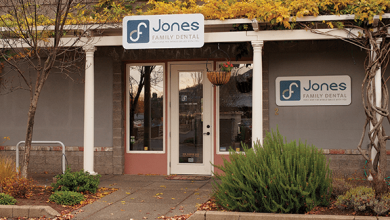Preventative Dentistry: The Cheapest Most Effective Path to Wellness
I have always focused my practice of dentistry on a foundation of prevention. As many of you know, restorative dentistry is quite expensive. It requires time and risk of discomfort or complication. The easiest, best way to ensure dental wellness is through prevention.
Preventative dentistry can save you tens of thousands of dollars of restorative work, not to mention countless hours of treatment.
The emphasis of this type of care educates the patient not only on what we find and are doing here in the dental office but also ways to maintain and improve home care. This is a partnership that includes trust, coaching, knowledge, education, awareness, and skill.
Early Prevention
Children should be seeing the dentist as soon as teeth appear in the mouth. This will establish a trusting relationship that will allow both improved wellness, but also an easier restorative appointment if one is needed in the future.
Preventative techniques include:
At-home oral hygiene. We all need to brush effectively for a minimum of two minutes, twice a day, and almost equal to this importance is flossing or in some cases using a dental pick or interproximal. For some, a water pressure irrigator known as a water-pik may be suggested.
Fluoride. I know that for some, fluoride is a controversial topic, especially here in Ashland. And although I will never try to convert an anti-fluoride person, the research indicates that it is crucial to preventing dental decay and repairing the damage that we do to our teeth with our modern diet.
Speaking of diet… We need to avoid carbohydrates and sugary foods. We need to pick foods high in nutrient value, and also understand that if it is sweet and tangy, then it is decay forming. Even if it is all-natural, organic, non-GMO, gluten free, kosher, etc…
Regular dental visits. Many people say things like, “I’ll see ya when it hurts.” The sad thing about this statement is that this will mean that extensive and expensive technical treatment will be needed at that point. Pain is a poor measure of dental health, and of the elderly patients that I have with all of their own teeth, every single one made an early commitment to making regular dental visits. Healthy mouths should receive dental cleanings every 6 months and an exam at least every year. Included in that exam is an evaluation of the teeth, soft tissue with a cancer screen, a head and neck exam, an evaluation of temporomandibular joint health, as well as a follow up on any previous treatment or issues that were present in the past.
Dental cleanings. These cleaning are performed by a Registered Dental Hygienist in most cases. They are health care professionals that have a degree and a license to help treat and educate us regarding the best methods of preventative dental care. They will remove plaque and educate you on areas of concern, but will also remove the tartar that we are unable to simply brush away.
X-rays. X-rays enable dentists to look for signs of dental problems that are not visible to the naked eye, such as cavities between teeth and problems below the gum line. The frequency of x-rays is based on individual need, but appropriate x-rays must always be current for an initial /comprehensive exam.
Mouth guards. I have personally removed once-healthy teeth that were shattered or broken due to traumatic injury in recreational sports/activities. Also, we use mouth guards to treat grinding and clenching that can damage teeth and the jaw joint.
Orthodontics. Straight teeth are not just for looks. Moving teeth into ideal position can allow for the roots to stay healthier, reduce our decay risk, and they may even allow for our jaw health to remain healthy and stable.
Sealants. Sound dental sealants are 100% effective at preventing dental decay on the area that they are placed.
Smoking and chewing tobacco. These things have a way of damaging our oral health and even our systemic health. They should be avoided and tobacco cessation is another service that the dental team may help achieve.
Patient education. The dental team’s biggest responsibility is education. I feel no obligation to talk anyone into treatment. People should get what they want so long as they are educated regarding the diagnosis, risks, and complications regarding their care. I do believe that educated patients do what is best for them.
Other preventive dental substances. Much like the effects of fluoride, bioavailable calcium in tri-calcium phosphate or proprietary products like ACP will remineralize damaged enamel, helping to stop cavities from entering the inner part of the tooth. Xylitol is a natural sweetener that can reduce tooth decay.
Technology for dental disease prevention. There are lists of technologies that can be used in preventative dentistry. Intraoral cameras, digital radiography, large monitors for patient education, in-operatory videos to help clarify treatment recommendations, and diagnodent laser decay identification devices. All of this technology is helpful, but nothing takes the place of individual time and attention.
In Conclusion
It is my opinion that quality dental care cannot be provided without an emphasis on prevention. I like the analogy of nails in the driveway. If we pulled into the driveway where a bucket of nails were dumped out and we popped all of our tires, would we simply get the tires replaced without removing the nails that caused the problem in the first place? Wouldn’t we want to know how the nails got there? Would it matter how nice those new tires were or how much you paid for them? Quality preventative care helps to remove those nails and figure out how they got there in the first place. If you are a regular dental patient, then keep it up. If it has been a while since you’ve gone to the dentist, now is the time. What’s begun is half done…. Call and make an appointment today.




